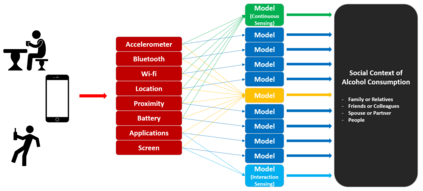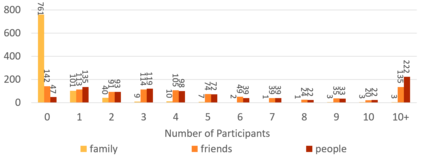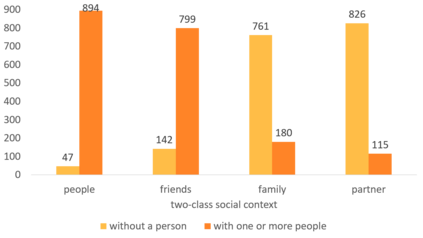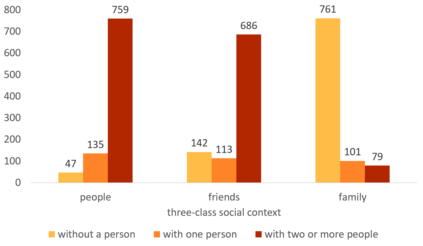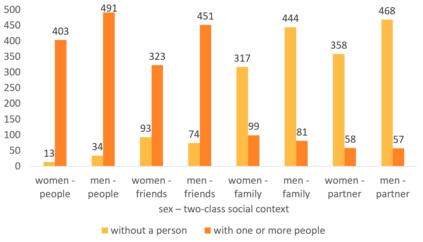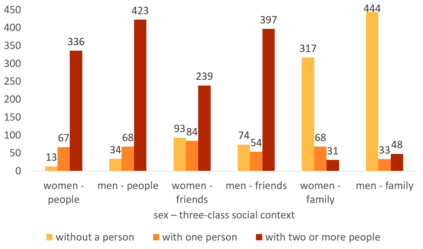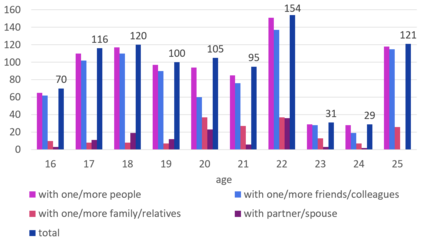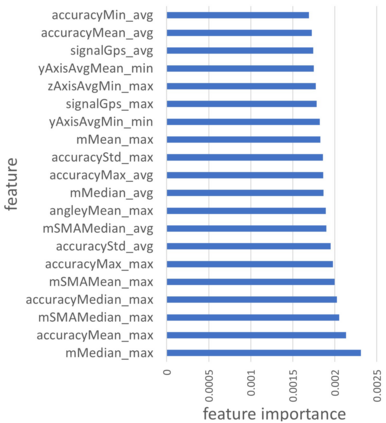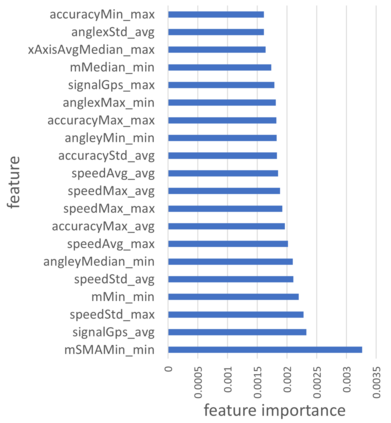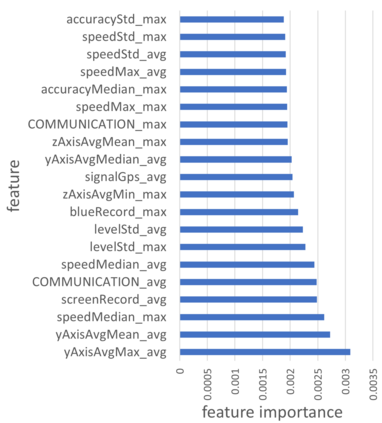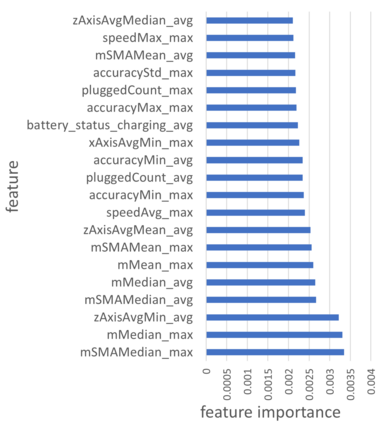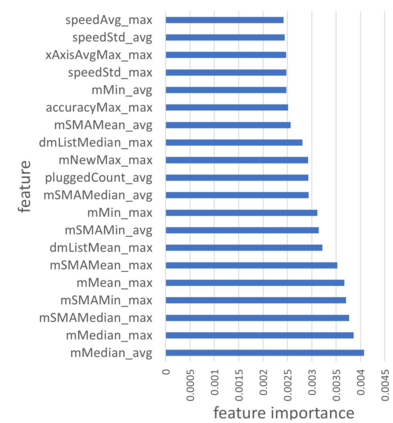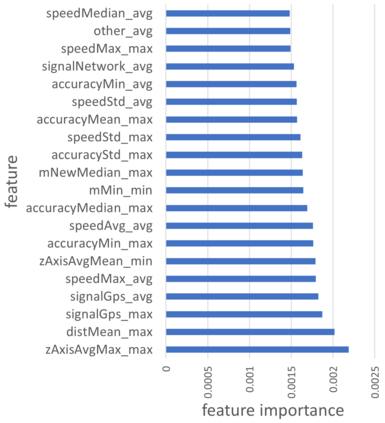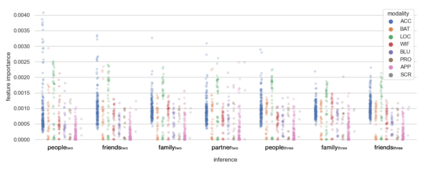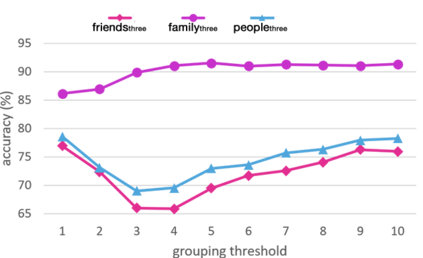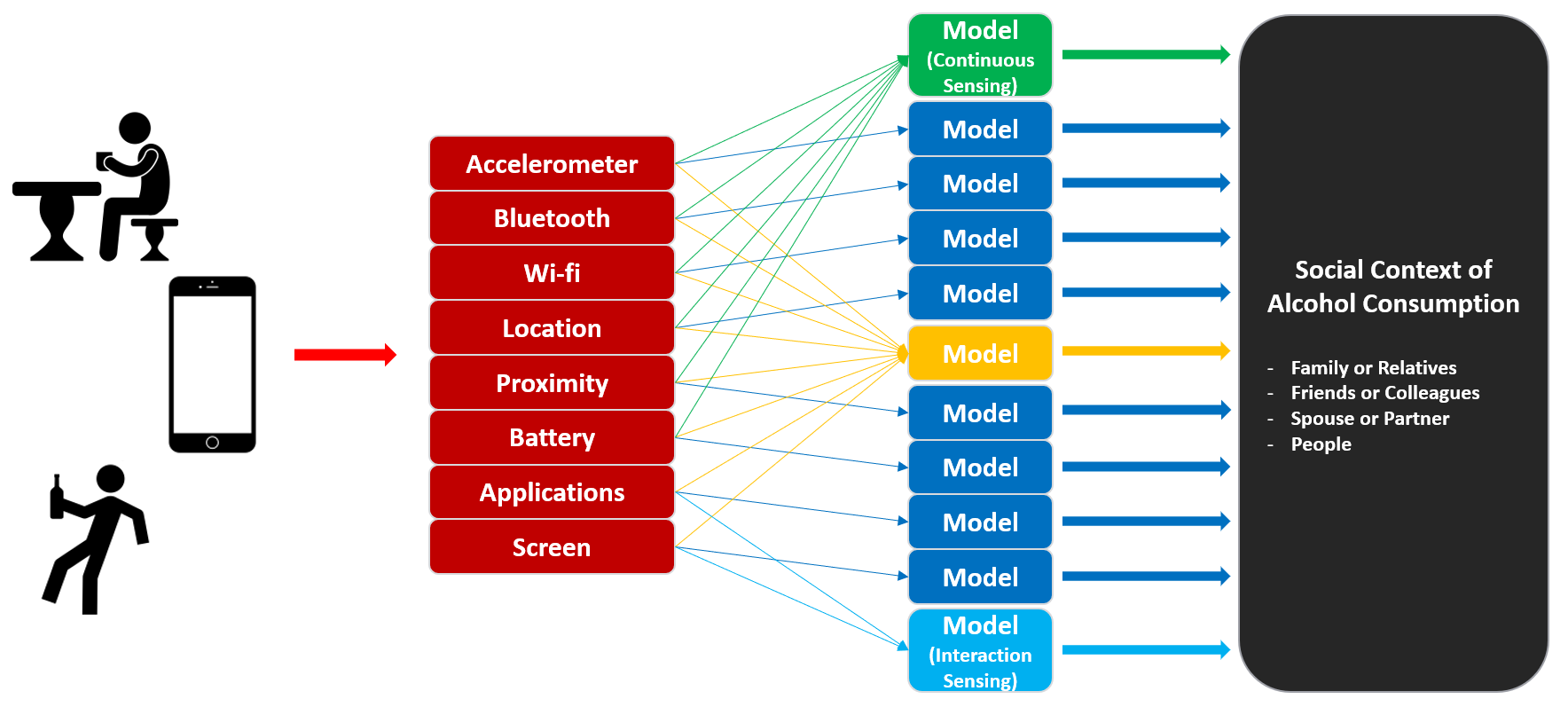According to prior work, the type of relationship between the person consuming alcohol and others in the surrounding (friends, family, spouse, etc.), and the number of those people (alone, with one person, with a group, etc.) are related to many aspects of alcohol consumption, such as the drinking amount, location, motives, and mood. Even though the social context is recognized as an important aspect that influences the drinking behavior of young adults in alcohol research, relatively little work has been conducted in smartphone sensing research on this topic. In this study, we analyze the weekend nightlife drinking behavior of 241 young adults in Switzerland, using a dataset consisting of self-reports and passive smartphone sensing data over a period of three months. Using multiple statistical analyses, we show that features from modalities such as accelerometer, location, application usage, bluetooth, and proximity could be informative about different social contexts of drinking. We define and evaluate seven social context inference tasks using smartphone sensing data, obtaining accuracies of the range 75%-86% in four two-class and three three-class inferences. Further, we discuss the possibility of identifying the sex composition of a group of friends using smartphone sensor data with accuracies over 70%. The results are encouraging towards (a) supporting future interventions on alcohol consumption that incorporate users' social context more meaningfully, and (b) reducing the need for user self-reports when creating drink logs.
翻译:根据先前的工作,饮酒者与周围其他人(朋友、家人、配偶等)之间的关系类型,以及这些人的人数(独一人、一人、一个团体等)与酒精消费的许多方面有关,例如饮酒量、地点、动机和情绪。尽管社会背景被认为是影响青少年酗酒行为的一个重要方面,但在酒精研究中,智能手机对这个主题的研究方面开展的工作相对较少。在本研究中,我们利用由自我报告和被动智能手机感知数据组成的数据集,在三个月内分析瑞士241名年轻人(独一人、一人、一个团体等)的周末夜饮行为。我们利用多种统计分析,表明从诸如感应仪、地点、应用、蓝牙和距离等模式的特征可以了解不同饮酒的社会背景。我们使用智能手机感知数据界定和评估了7项社会背景推论任务,在4个两班和3个班级中获得了75%至86%的幅度。此外,我们利用智能智能智能智能智能手机数据(我们利用智能智能智能智能智能智能智能智能智能数据来识别未来消费结果的可能性),并用智能智能智能智能智能智能智能智能智能智能智能智能智能智能智能智能智能数据来记录(我们)来记录(我们利用智能智能智能智能智能记录来研究)来识别数据来识别数据来识别分析,从而鼓励用户的自我浏览需要)

